All Products in Strela:
welcome on STRELA-WATCH.COM !
For watch lovers and collectors.
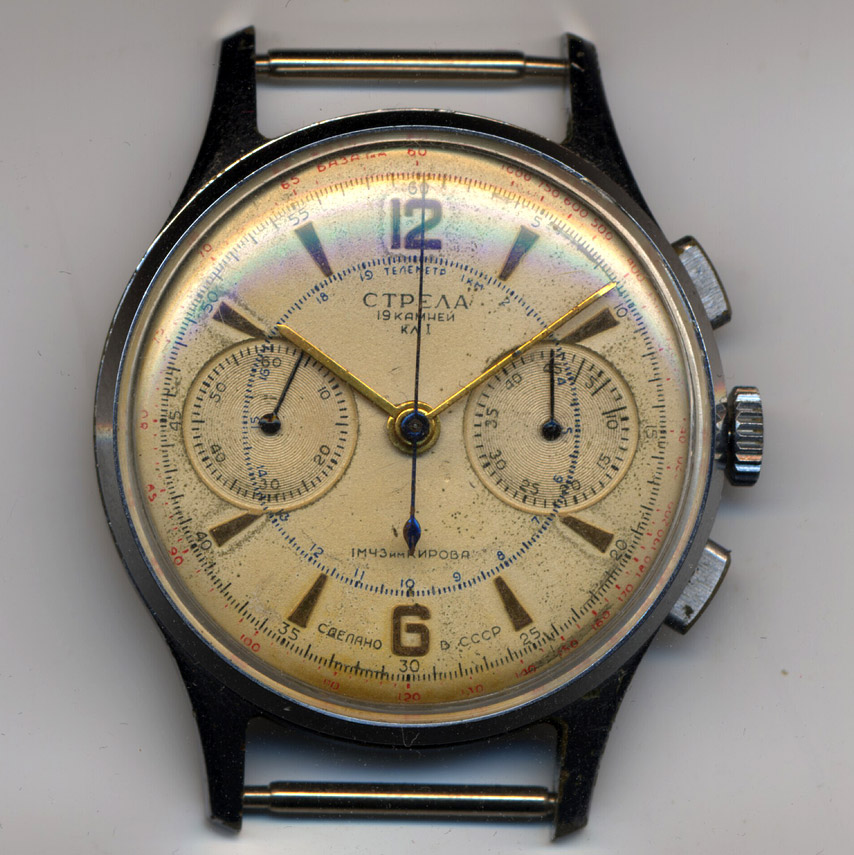 The first STRELA watch, (STRELA in cyrillic: СТРЕЛА = arrow) was a Russian chronograph model driven by a Poljot 3017 caliber, a column wheel chronograph based on the rare Venus 150/152 caliber. The production equipment for the 3017 cal. was from Switzerland, the STRELA itself though was a real Soviet timekeeping product from the 1st Moscow Watch Factory (1.MWF, renamed to POLJOT after 1964). The watch had two registers, 45 minute elapsed time and constant seconds hand, also a central chronograph hand for seconds. The STRELA had a chrome plated case and a stainless steel snap back. We will post a gallery of our collection here soon. The watch was introduced in 1959 and at first was only available to the Soviet Air Force (BBC) and a few ranking officials. STRELA’s childhood was in the Russian military.
The first STRELA watch, (STRELA in cyrillic: СТРЕЛА = arrow) was a Russian chronograph model driven by a Poljot 3017 caliber, a column wheel chronograph based on the rare Venus 150/152 caliber. The production equipment for the 3017 cal. was from Switzerland, the STRELA itself though was a real Soviet timekeeping product from the 1st Moscow Watch Factory (1.MWF, renamed to POLJOT after 1964). The watch had two registers, 45 minute elapsed time and constant seconds hand, also a central chronograph hand for seconds. The STRELA had a chrome plated case and a stainless steel snap back. We will post a gallery of our collection here soon. The watch was introduced in 1959 and at first was only available to the Soviet Air Force (BBC) and a few ranking officials. STRELA’s childhood was in the Russian military.
The dial and hand design changed over time and came in various versions, with tachymetric chapter rings, with non-luminous and luminous dials. It was issued under a few different names over time. At first there was the cyrillic “СТРЕЛА”, the latin “POLJOT”, and later the latin “SEKONDA” labeled dials. Throughout this transformation the STRELA also became available to a wider circle of people, scientists and members of the Russian Railway. At a certain point the watch was even available to anyone who had the appropriate rubels. At the end of 1979 the total sum of produced STRELAs, (including POLJOT & SEKONDA) reached 100 000 pieces. However, the STRELA was official flight gear given to cosmonauts for almost 20 years.
Today it is not easy to gain detailed information about the STRELA history and different cosmonauts wearing specific models. By that time the STRELA was mainly a timekeeping tool and not a status symbol. Nevertheless there are certain landmark events to mention. The first one is a real space flight highlight, the other one the first huge human tragedy of it.

March 18, 1965 – a space exploration milestone, when Alexey Arkhipovich Leonov became the first human to walk in space. The mission was Voskhod-2. On his wrist a STRELA watch. There is some uncertainty which model though. It was either a non-luminous cyrillic marked watch or an early, white-dialed luminous version.
He was outside the space craft for 12 minutes and 9 seconds on March 18, 1965, connected to the craft by a 5.35 meter tether.
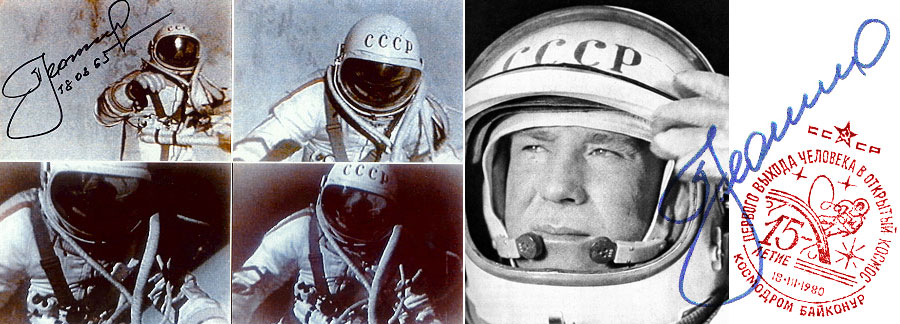
Leonov’s space walk beat Astronaut Ed White‘s by three months. Leonov’s Voskhod capsule carried two men, like Gemini, but the Soviets constructed an inflatable airlock for Leonov’s space walk. There were tense moments when Leonov found his space suit too rigid to reenter the airlock. Leonov bled air out of his suit, but was barely able to return. Later, a malfunction of the automatic landing system forced Leonov and his crew mate to land in the Ural mountains and deep snow, with wolves growling and scratching at Voskhod’s partly open hatch.
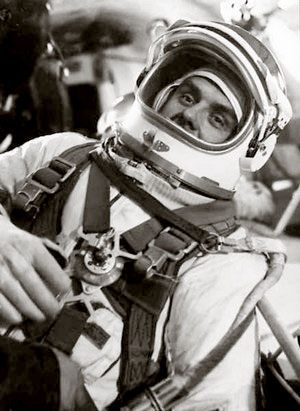
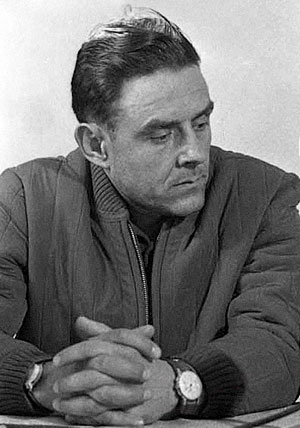 The other brave man to mention is Vladimir Mikhaylovich Komarov. A true Soviet hero who was the first cosmonaut to travel into space more than once, and sadly the first human to die during a space mission on Soyuz-1. He was an experienced cosmonaut on his second flight, and had completed all his experiments successfully before returning to Earth.
The other brave man to mention is Vladimir Mikhaylovich Komarov. A true Soviet hero who was the first cosmonaut to travel into space more than once, and sadly the first human to die during a space mission on Soyuz-1. He was an experienced cosmonaut on his second flight, and had completed all his experiments successfully before returning to Earth.
We have gathered some interesting facts about him in a blog entry here.
A series of misfortunes had occured prior to the launch of the Soyuz-1 spaceship. Engineers found about 200 constructive defects before the flight, but the Soviet government did not agree to push the flight back against the background of the nation’s space rivalry with the United States.
Yuri Gagarin, the planet’s first cosmonaut, an international hero, was Komarov’s stand-in in the tragic flight. Gagarin was obviously aware of the technical flaws and of the pressure from the country’s political administration. He tried to use his reputation to stand up against that pressure. Gagarin said that he could replace Komarov in the flight in a hope that top officials would pay more attention to technical details and eventually decide to delay the launch of the spaceship.
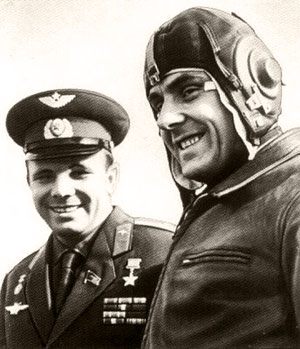 Gagarin’s request was denied. Soyuz-1 blasted off with Komarov on board on April 23, 1967. The launch was normal, but one of the panels of the solar battery did not unfold after the spacecraft entered Earth’s orbit. The short-wave communication equipment went out of order soon afterwards. Then within seconds of landing, just after he reentered the Earth’s atmosphere, the strings of the parachute intended to slow his descent apparently became tangled. The spaceship hurtled to the ground from four miles up. It is likely that Colonel Komarov was killed instantly on impact.
Gagarin’s request was denied. Soyuz-1 blasted off with Komarov on board on April 23, 1967. The launch was normal, but one of the panels of the solar battery did not unfold after the spacecraft entered Earth’s orbit. The short-wave communication equipment went out of order soon afterwards. Then within seconds of landing, just after he reentered the Earth’s atmosphere, the strings of the parachute intended to slow his descent apparently became tangled. The spaceship hurtled to the ground from four miles up. It is likely that Colonel Komarov was killed instantly on impact.
That is how Vladimir Komarov became the first hero of the space race between the two superpowers. The race ended after Neil Armstrong, Michael Collins and Edwin Aldrin landed on the Moon. Neil Armstrong placed a small bag of memorial items on the Moon before leaving, a gesture to honour the Apollo-1 astronauts. In his 1989 book, “Men from Earth”, Buzz Aldrin says that other items also included, were Soviet medals commemorating cosmonauts Vladimir Komarov and Yuri Gagarin.
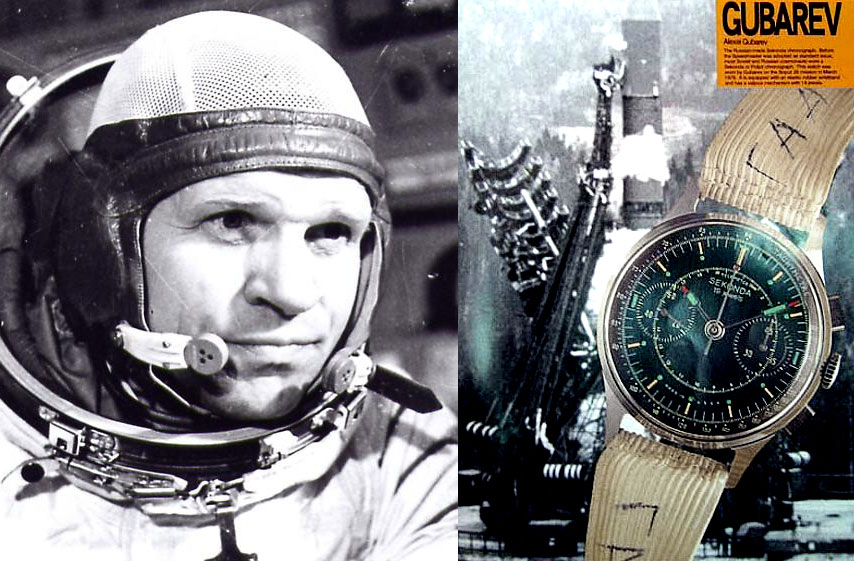 Alexey Alexandrovich Gubarev is another cosmanout worth to mention here. He was onboard the Soyuz-28 mission together with Vladimir Remek. Gubarev and Remek – the first non-Soviet, non-American to travel to space – were launched aboard Soyuz-28 on March 2, 1978. The crew docked with the orbiting Salyut-6 space station. On Gubarev’s wrist, a black labeled SEKONDA.
Alexey Alexandrovich Gubarev is another cosmanout worth to mention here. He was onboard the Soyuz-28 mission together with Vladimir Remek. Gubarev and Remek – the first non-Soviet, non-American to travel to space – were launched aboard Soyuz-28 on March 2, 1978. The crew docked with the orbiting Salyut-6 space station. On Gubarev’s wrist, a black labeled SEKONDA.
In 1979, three years after the Poljot 3133 caliber chronograph was introduced, the Poljot 3017 caliber went into end of Production (EOP). It was the end of a great success story, but sadly also the end of Russian column wheel chronographs.
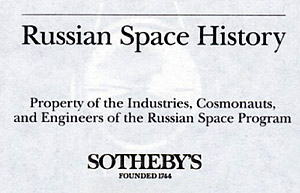 December 11, 1993 at 10:15 am Sotheby’s New York held a big auction named “Russian Space History”. Property of the industries, cosmonauts and engineers of the Russian Space Program. Beside helmets, clothes and other memorabilias a few “flown” STRELA, SEKONDA and POLJOT watches were amongst these artefacts. The auction was such a huge success, Sotheby’s gathered more Russian Space Program items and held a few more auctions the following years.
December 11, 1993 at 10:15 am Sotheby’s New York held a big auction named “Russian Space History”. Property of the industries, cosmonauts and engineers of the Russian Space Program. Beside helmets, clothes and other memorabilias a few “flown” STRELA, SEKONDA and POLJOT watches were amongst these artefacts. The auction was such a huge success, Sotheby’s gathered more Russian Space Program items and held a few more auctions the following years.